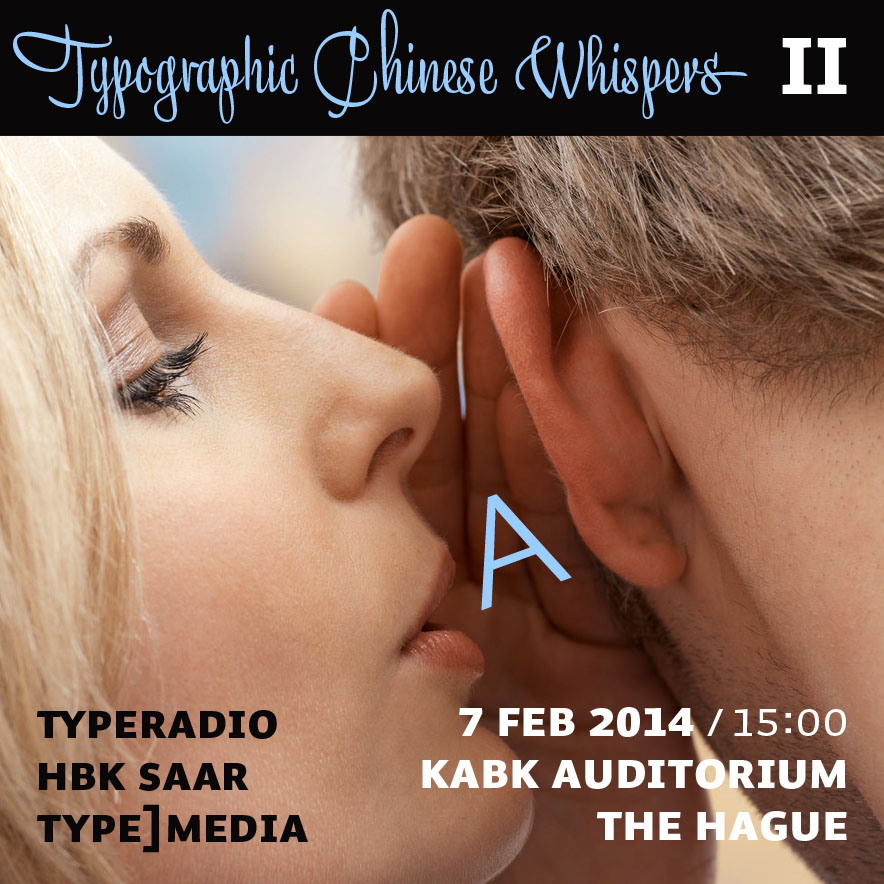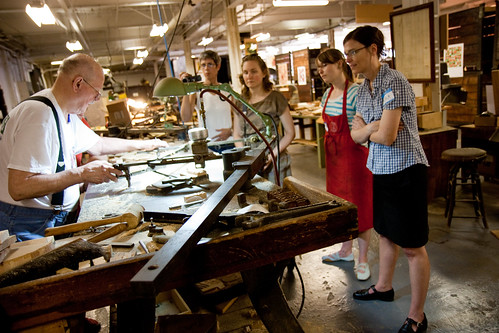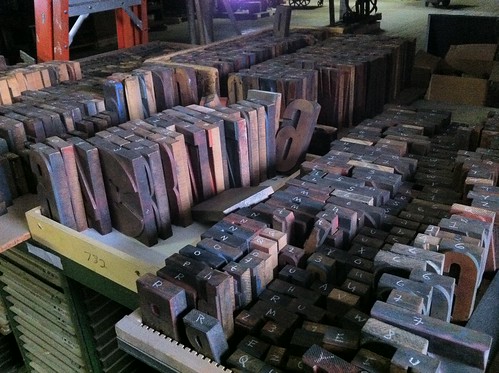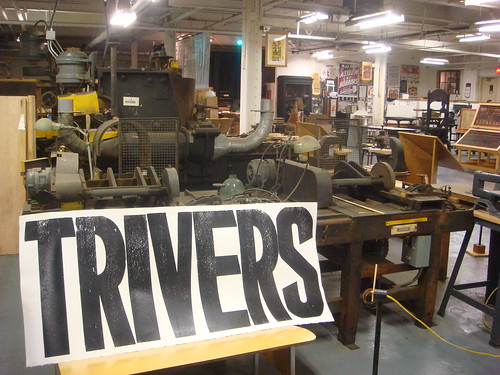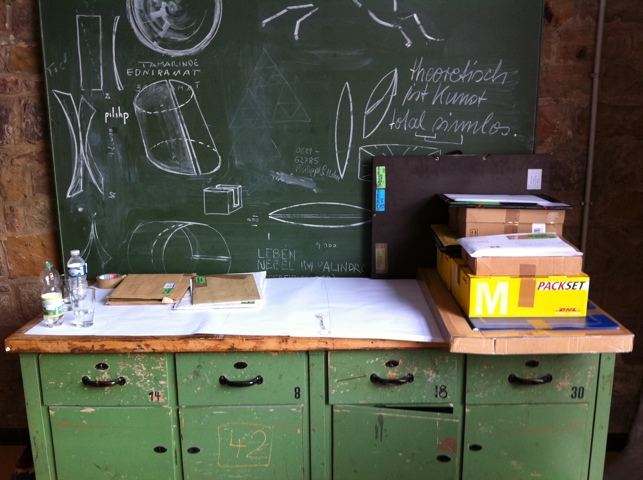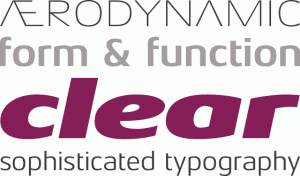Last week I found myself faced with the rare and luxurious task to spend quite some money, quickly, and on something typography related.
I guess I’m not alone with this end-of-year-business-expence problem, so instead of a list with cool things in type 2010 I want to share my shopping experiences here.
As kind of a warm-up I ordered a couple of books and studio-material — easy — followed by some software, but I figured investing in fonts would be a lot less age sensitive and a more sustainable way to spend the remaining rest of this non-recurring source of capital. But what to pick?
I have a good overview and dialog with German and neighbouring European foundries, the classic Adobe Font Folio and ancient URW collection but what was kind of missing were the more independent anglo-american contributions of the past years.
so
So I started my stroll — at Font Bureau. I love them for their varied collection of part vernacular, part sophisticated typefaces, a lot with display styles available, and webfonts of course (but better avoid the “wacky” section).
My cart filled quickly, felt a bit like the old game »Ich packe meinen Koffer und nehme mit …«:
Amplitude: Because I fell in love with the triangular opening at the base of the a. A big fat wide compressed family presumably suitable for almost everything. Not too gruff, yet not too friendly (I got a bit tired of all those numerous humanist sans recently).
Farnham Text + Display: The a again, it won me over ever since I first saw it. I’m into baroque, Baskerville-ish typefaces for quite a while now and Farnham is a very amicable interpretation of the theme. I buy my daily Frankfurter Rundschau just because of this.
Giza: Yeah! Who can resist Nine Five? Now to find the right occasion to use and not only look at it.
Ibis Text + Display: “Very small and very big” are probably the best applications for Ibis. It resembles the feel of Zapf’s Melior and other squarish, almost-slab-seriffed 1950s typefaces I like a lot. Didn’t use it up to now, but Ibis does an amazing job as a webfont, especially on windows. Bold italic!
Meno: An irresistable cursive, like a bacchanal exaggeration of Galliard. Probably tricky to typeset but I definitely want to take the challenge and spend some time with her one day.
Miller Text + Display: Hard to go wrong with Miller, one of my all-time favourites. A versatile workhorse for tons of text with crispy, sexy display styles. Yum!
Prensa: As an admirer of Dwiggins one simply has to love Prensa (and Delicato and Enigma). Edgy, hardheaded, yet very legible and with great display qualities, too. Once again: bold italic!
Skilt Gothic: A better replica, derived from 1920s Danish signage lettering, this new release is a good alternative to DIN or when you want to say “industrial and undesigned”. Cool g and y, both one- and two-storey a’s and lots of other OT goodies (yeah, still rare but finally pro/premium OpenType arrived at Font Bureau, too).
Titling Gothic: Incredible, huge Grotesque families are FB’s specialty, so choosing a sans and picking styles from their ample palette was extra hard. I went for Titling Gothic because it somehow stands in the middle between the eccentric Bureau Grot and the more sane Benton Sans and Franklin. I would have liked Boomer Sans, too, but that sounded difficult to license.
Trilby: Well, what to do with Trilby, posters probably. It’s just so damn cool.
Whitman: I have to admit, it’s not my favourite but it seemed an expedient investment. Maybe it’s the a (again, they are my acid test), or that it is so perfectly balanced, but Whitman is a good alternative for Joanna, often described as a difficult diva. Or Scala.
Zocalo Text + Display: It definitely is the a! Freakish italics, cantilevered serifs in the caps, very readable in text, quirky at display sizes, simply a joy to look at.
so
I didn’t select all those typefaces at once. But after putting like 10 fonts in the cart I noticed a significant drop in price, even though I didn’t get the full families but only individual weights. From 40$ in the beginning the price per font decreased to 35, 30 and finally 25$ only. That’s awesome! And dangerous.
From then on I was lost. I forced myself to take a break, shopped at some other manufacturers and wholesalers and decided to fill my parked FB-cart with as many fonts as possible at the end of my trip.
so
Stop 2: Hoefler & Frere-Jones
They make very good, downright perfect typefaces, no doubt. I like them, really. But somehow everybody loves HFJ and regard them as the authority in quality fonts — it doesn’t make me want to use their typefaces so much anymore. Everybody else is using them already.
so
Stop 3: Process Type
Right on time the nasty* guys at Process Type announced a 25%-off christmas sale. Not easy to keep me from buying something with a wallet so loosely in my pocket. I got Locator, a versatile, uncluttered Sans with cool Q, J and l (a bit like in Neuzeit) and freaky Maple because I couldn’t resist the g and e, r and a are so cheerful in bigger sizes.
so
Intermezzo:
As mentioned earlier I mainly roamed through the collection of the smaller independent foundries and I have to admit “evil”* MyFonts came in really handy during my expedition. I’d rather spend my money directly on the foundry’s site but it can get quite tedious to look up all of them individually, creating an account, providing payment info etc. So I lazily filled my cart at this central market place. Besides MyFonts’ search, mark, save, rate, tag and easy-use test-facilities are just super practical (plus some foundries don’t even sell their fonts on their sites).
While browsing some “new-and-noteables” I went astray and came across an ancient all-time-favourite of mine — and simply melted away confronted with its light italic: Bitstream’s Schadow by Georg Trump, one of my favourite designers anyway. Look at the g!
so
End of day 1. To be continued with some okay type, more hands-on shopping experiences, my in- and out-takes, reciept and conclusion.
so
